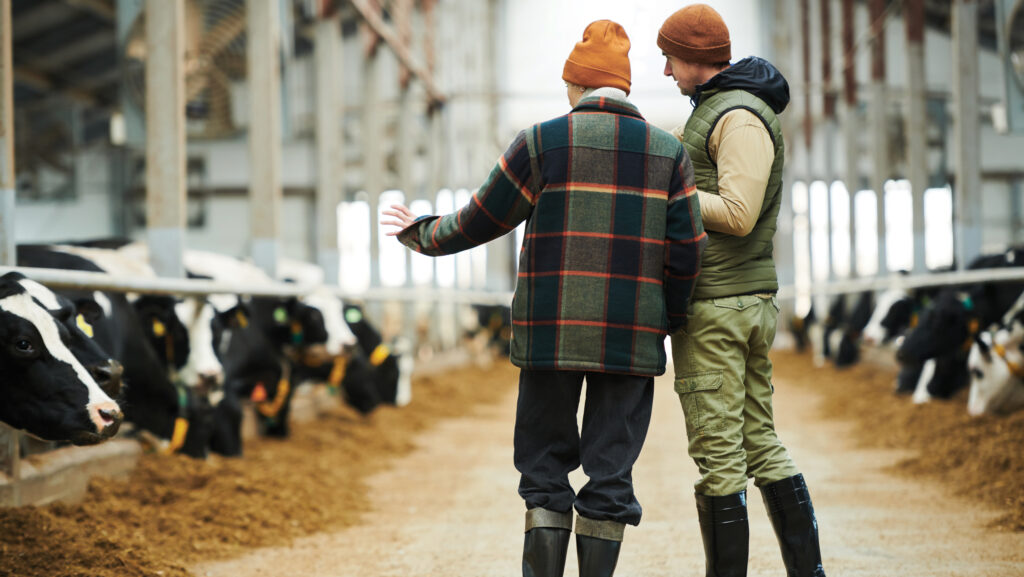Succession: A quarter of farmers have not discussed retirement plans
 © Shironosov/Istockphoto
© Shironosov/Istockphoto The government’s inheritance tax changes have thrust succession planning into the headlines.
But the financial aspect of succession is only one part of a broad and complex transition process that must be addressed by family farms, according to Prof Matt Lobley of Exeter University.
Prof Lobley says it is vital for farm businesses to realise that the wider issues of succession were important and needed to be understood and tackled.
See also: Reasons to address farming succession grow stronger
He was speaking at the Transition Project annual dinner on the eve of the Oxford Farming Conference on 8 January.
Prof Lobley, who has researched farm business succession for more than 30 years, said it was not just the financial side that made the handover to heirs complex.
It was the people involved – spouses, sons, daughters, brothers and sisters – who made succession planning difficult and challenging, he said.
Starting the process
The whole succession process can be bewildering, Prof Lobley added.
“When should discussions start? How should they be carried out? Who should be involved? These are all questions that create challenges,” he said.
Central to this is the likelihood that the farm is being run by the oldest member of the family and they are likely to retire much later compared with the UK average.
A survey carried out by the University of Exeter’s Centre for Rural Policy Research revealed that “retirement” had a very different meaning for farmers.
Only 19% of survey respondents planned on fully retiring. Those who did look to retire or semi-retire aimed to do so at a later age than the UK average.
Almost half (48%) planned to retire after the age of 70. Reasons for putting off retirement included practical issues such as where to live and how to finance retirement.
But it is possibly due to uncertainty over addressing the difficulties associated with transferring responsibility to younger generations.
Difficult choice
A farm business may have a number of heirs keen to take the reins, but the scale and setup do not support multiple leadership roles.
The decision, then, to pick one and make provision for the non-succeeding heirs is too difficult to broach and simply gets put off.
This reluctance could be behind a finding in the survey that more than a quarter of farmers (27%) have not discussed their retirement plans with anyone.
Survey respondents also reported that creating a succession plan was not seen as an essential aspect of business planning.
Only 28.3% of respondents with a successor had a formal succession plan in place.
But it is important.
There is strong evidence to show that businesses where there is a carefully planned approach to succession are more likely to see better growth and development, Prof Lobley stressed.
Where there are potential successors, he urged farmers to begin formal and business-led discussions as early as possible.
These discussions were pivotal and needed to be well-planned business meetings, not just a chat at the end of a family meal, he said.
They also needed to be regular, scheduled meetings so that the people involved had the chance to help form a workable plan for all parties.
At this stage it is advisable to bring in a professional facilitator who has a dispassionate view of the business and the knowledge and experience to draw up a plan.
Selecting the succeeding heirs is a complex process and a facilitator will help work through the decisions.
It will cost money to employ a facilitator, but Prof Lobley said getting the process wrong and facing legal challenges and fallout between family members would be more expensive in the long run.
Gender bias
It is worth pointing out that there is still a marked gender bias in the process.
A large majority (72.3%) of farmers surveyed identified a son as the person most likely to succeed, compared with only 17.7% choosing a daughter, despite an almost even split in the proportions of respondents with sons and daughters.
While the reasons for this are likely to be complex and culturally ingrained, Prof Lobley said UK agriculture was facing some of the most significant challenges for decades so it made good business sense to draw on the widest pool of possible future business leaders.
Plan the transition
Once the succeeding heirs had been chosen there needed to be a well-planned transition process, he said.
The successor must be given all of the business data, projections and accounts and be allowed to gradually assume control, without interference from the retiring farmer.
